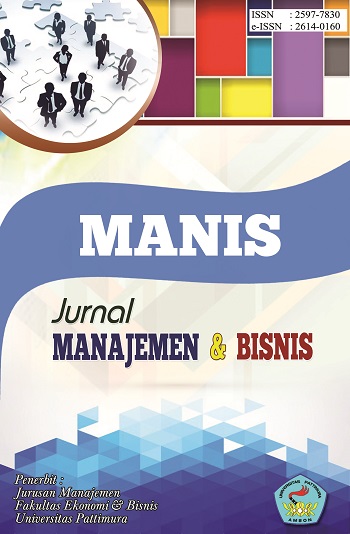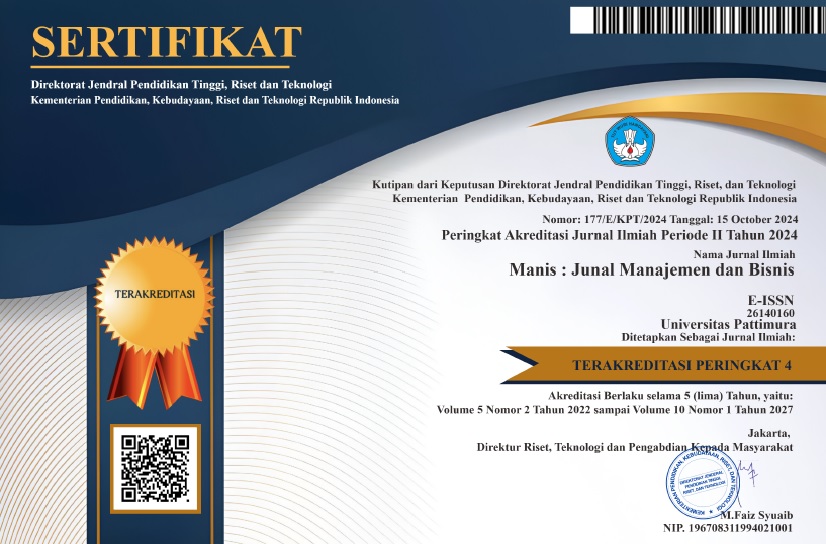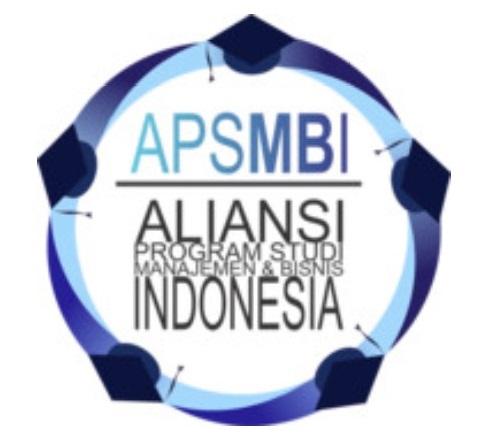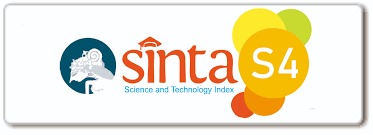PENGARUH PERSEPSI KEMUDAHAN PENGGUNAAN, KEPERCAYAAN DAN RELIGIUSITAS TERHADAP MINAT BERWAKAF UANG MENGGUNAKAN APLIKASI WAKAF
Abstract
This study aims to analyze the influence of perceived ease of use, trust, and religiosity on the behavioral intention to perform cash waqf through a waqf application in the Jabodetabek area (Jakarta, Bogor, Depok, Tangerang, and Bekasi). This study employs a quantitative approach with a survey method to collect data from internet users who have participated in waqf through waqf applications or websites. Statistical techniques are used for data analysis to test the proposed hypotheses, and the analytical tool applied is SEM-PLS. The results showed that the three variables had a significant influence on interest in using the cash waqf application. Perceived Ease of Use acts as a major factor in technology adoption, where the ease of use of the application increases user interest. In addition, a high level of religiosity encourages individuals to be more interested in waqf through digital applications. Trust in transparency, security, and management of funds according to sharia principles also plays an important role in increasing user interest. The implications of these findings indicate the importance of waqf application providers to improve ease of use, transparency, and features that support religious values to attract more users. The findings are expected to provide insights into the future development of digital-based waqf applications. Future research could expand the research variables and apply a qualitative approach to dig deeper into the user experience.
Downloads
References
Ab Shatar, W. N., Hanaysha, J. R., & Tahir, P. R. (2021). Determinants of cash waqf fund collection in Malaysian Islamic banking institutions: empirical insights from employees’ perspectives. ISRA International Journal of Islamic Finance, 13(2), 177–193. https://doi.org/10.1108/IJIF-06-2020-0126
Adistii, D., Susilowati, D., & Ulfah, P. (2021). Peran Akuntabilitas sebagai Moderasi Hubungan Religiusitas dan Literasi Wakaf terhadap Minat Berwakaf Uang. Reviu Akuntansi Dan Bisnis Indonesia, 5(2), 122–137. https://doi.org/10.18196/rabin.v5i2.12238
Ajzen, I. (1991). The Theory of Planned Behavior. In ORGANIZATIONAL BEHAVIOR AND HUMAN DECISION PROCESSES (Vol. 50).
Ascarya, A. (2021). Peran keuangan sosial syariah selama pandemi Covid-19 dalam pemulihan ekonomi Indonesia. Jurnal Internasional Keuangan dan Manajemen Islam dan Timur Tengah. https://doi.org/10.1108/IMEFM-07-2020-0351
Badan Wakaf Indonesia (2023) https://www.bwi.go.id/wp-content/uploads/2023/12/Arahan-dan-Up-Date-Perwakafan-Rakornas-2023.
Bagozzi, R. P. (1981). Evaluating structural equation models with unobservable variables and measurement error: a comment.
Bagozzi, R. P., Fornell, C., & Larcker, D. F. (1981). Canonical correlation analysis as a special case of a structural relations model. Multivariate Behavioral Research, 16(4), 437-454.
Bank Indonesia: Transaksi Belanja Pakai E-Money Tembus Rp38 Triliun pada Agustus 2023 (katadata.co.id)
Baron, R. M., & Kenny, D. A. (1986). The Moderator-Mediator Variable Distinction in Social Psychological Research: Conceptual, Strategic, and Statistical Considerations. Journal of Personality and Social Psychology, 51(6), 1173–1182.
Budiansyah, M. I., & Ayyubi, S. El. (2021). Faktor-Faktor Yang Memengaruhi Wakif Dalam Berwakaf Online. Al Maal: Journal of Islamic Economics and Banking, 2(2), 212. https://doi.org/10.31000/almaal.v2i2.3741
Creswell, J. W. 2013. Qualitative Inquiry and Research Design: Choosing Among Five Approaches (3rd ed.). Los Angeles: Sage Publications.
Creswell, J. W. 2014. Research Design: Qualitative, Quantitative, and Mixed Methods Approaches (4th ed.). Los Angeles: Sage Publications.
Davis, F. D. (1989). Perceived Usefulness, Perceived Ease of Use, and User Acceptance of Information Technology. IT Usefulness and Ease of Use, 319–340.
Davis, F.D, Bagozzi, R. P, Washar, P. R, (1989), User Acceptance of Computer Technology : A Comparison of Two Theoritical Models. Management Science, http://dx.doi.org/10.1287/mnsc.35.8.982
Davis, F.D. (1989). Perceived Usefulness, Perceived Ease of Use, and User Acceptance of Information Technology. MIS Quarterly , 13(3), 319-340. https://doi.org/10.2307/249008Davis, F.D. 1989, ‘Perceived Usefulness, Perceived Ease of Use and Acceptance of Information System Technology’. MIS Quartery, Vol. 13 No. 3, pp.319-339.
Devellis, R. F. (2016). Scale Development: Theory And Applications (4th Ed.). Sage Publications, Inc.
Didik. (2019). 10 Aplikasi Pembayaran Digital yang Populer Saat Ini. https://carisinyal.com/jenis-pembayaran-digital-populer/
Elok Irianing Tyas; Emile Satia Darma (2017). Pengaruh Perceived Usefulness, Perceived Ease of Use,Perceived Enjoyment, dan Actual Usage Terhadap Penerimaan Teknologi Informasi: Studi Empiris Pada Karyawan Bagian Akuntansi dan Keuangan Baitul Maal Wa Tamwil Wilayah Daerah Istimewa Yogyakarta dan Sekitarnya. Reviu Akuntansi dan Bisnis Indonesia, Vol. 1 No. 1.
Faturohman, T., Hassandi, I., & Yulianti. (2020). USER ACCEPTANCE OF ONLINE WAQF APPLICATIONS: EVIDENCE FROM INDONESIA. Journal of Islamic Monetary Economics and Finance, 6(3), 503–530. https://doi.org/10.21098/jimf.v6i3.1117
Febriyanti, H. (2018). Pengaruh Sistem Pembayaran Non Tunai Dalam Era Digital Terhadap Tingkat Pertumbuhan Ekonomi Indonesia. 6681, 306–313.
Firdaus, A. (2023). Integrasi Wakaf pada Asuransi Syariah. https://www.researchgate.net/publication/366822393
Fishbein M., & I., Ajzen. 1991, Belief, Attitude, Intention and Behavior: An Introduction to Theory and Research, Reading, MA: Addison-Wesley, pp.74-85.
Fornell, C., & Larcker, D. F. 1981. "Evaluating Structural Equation Models with Unobservable Variables and Measurement Error." Journal of Marketing Research, 18(1), 39-50.
Fuadi, NFZ (2018). Wakaf sebagai alat Islam untuk pembangunan ekonomi. Economica: Jurnal Ekonomi Islam , 9 (1),
Galih Pratama (2024) Kemenag Buka-bukaan Permasalahan Wakaf di Indonesia. Kemenag Buka-bukaan Permasalahan Wakaf di Indonesia | Infobanknews
Ghozali, I. (2008). Structural Equation Modeling: Metode Alternatif Dengan Partial Least Square (Pls). Badan Penerbit Universitas Diponegoro.
Gustani, G., & Ernawan, D. A. (2016). Cash waqf as alternative source of financing for Islamic micro-finance institutions in Indonesia. Journal of Islamic Economics Lariba, 2(2).
Hair Jr F.J., Sarstedt M., Hopkins L. & Kuppelwieser G. V., (2014), “Partial least squares structural equation modeling (PLS-SEM) An emerging tool in business research”, European Business Review, Vol. 26 No. 2, pp. 106-121
Hair, J. F., Black, W. C., Babin, B. J., & Anderson, R. E. 2010. Multivariate Data Analysis (7th ed.). Pearson Prentice Hall.
Hair, J. F., Black, W. C., Babin, B. J., & Anderson, R. E. 2014. Multivariate Data Analysis (7th Edition). Pearson Education Limited.
Hair, J.F., Hult, G.T.M., Ringle, C.M., & Sarstedt, M. (2014). A Primer On Partial Least Square Structural Equation Modelling (Pls-Sem). Los Angeles: Sage Publication.
Hair, J.F., Jr, Hult, G.T.M., Ringle, C. And Sarstedt, M. (2017), A Primer On Partial Least Squares Structural Equation Modeling (Pls-Sem). Usa: Sage Publications.
Hasan, S. (2010). Wakaf Uang Dan Implementasinya Di Indonesia. De Jure: Jurnal Hukum Dan Syar’iah, 2(2), 162–177. https://doi.org/10.18860/j fsh.v2i2.2976.
Hendarsyah, D. (2021). Peran Ekonomi Digital Dalam Pemulihan Ekonomi Dampak Covid- 19 Di Indonesia.
Hilman Hakiem, Irfan Syauqi Beik, & Idqan Fahmi. (2022). Faktor-Faktor yang Memengaruhi Minat Masyarakat Berwakaf Uang/Melalui Uang dalam Mendukung Pembangunan Berkelanjutan Kota Bogor. AL-MUZARA’AH, 10(2), 155–168. https://doi.org/10.29244/jam.10.2.155-168 https://doi.org/10.29313/jres.v1i1.97
Huda, N.'., & Heykal, M. (2015). Lembaga Keuangan Islam: Tinjauan Teoritis dan Praktis.
Imam T. Saptono, 2023. Badan Wakaf Indonesia (BWI) . Proyeksi Perwakafan Nasional.
Indra., & Ascarya. (2022). Standard Methodology For Research In Islamic Economics And Finance. Teaching And Research Methods For Islamic Economics And Finance (1st Ed). London: Routledge. Https://Doi.Org/10.4324/9781003252764
Irawati, T., Rimawati, E., & Pramesti, N. A. (2020). Penggunaan Metode Technology Acceptance Model (TAM) Dalam Analisis Sistem Informasi Alista (Application Of Logistic And Supply Telkom Akses). Is The Best Accounting Information Systems and Information Technology Business Enterprise This Is Link for OJS Us, 4(2), 106–120. Jogiyanto. 2007. Sistem Informasi Keperilakuan, Yogyakarta: Penerbit Andi, Edisi I
Masrizal, Huda, N., Harahap, A., Trianto, B., & Sabiu, T. T. (2023). INVESTIGATING THE DETERMINANTS OF CASH WAQF INTENTION: AN INSIGHT FROM MUSLIMS IN INDONESIA. Journal of Islamic Monetary Economics and Finance, 9(1), 17–38. https://doi.org/10.21098/jimf.v9i1.1607
Mayer, R. C., Davis, J. H., & David Schoorman, F. (1995). An Integrative Model of Organizational Trustt (Vol. 20, Issue 3). https://www.jstor.org/stable/258792?seq=1&cid=pdf-
Moorman, C., Zaltman, G., & Deshpande, R. (1992). Relationships between Providers and Users of Market Research: The Dynamics of Trustt within and between Organizations. Journal of Marketing Research, 29(3), 314–328. https://doi.org/10.1177/002224379202900303
Muflih, M. (2022b). Muzakki’s adoption of mobile service: integrating the roles of technology acceptance model (TAM), perceived Trustt and religiosity. Journal of Islamic Accounting and Business Research. https://doi.org/10.1108/JIABR-09-2021-0273
Muhson, A. (2006). Teknik Analisis Kuantitatif. Universitas Negeri Yogyakarta. Yogyakarta, 183-196.
Muthoifin, M., & Firdaus, I. (2020). Pengelolaan Wakaf Produktif untuk Pemberdayaan Umat. Profetika: Jurnal 253–259. https://doi.org/10.23917/profetika.v21i2.13085 Oktavendi, T. W., & Mu’ammal, I. (2022). Acceptance model for predicting adoption of Zakat, Infaq, and Sodaqoh (ZIS) digital payments in Generation Z. Journal of Islamic Accounting and Business Research, 13(4), 684–700. https://doi.org/10.1108/JIABR-09-2021-0267
Neter, J., Kutner, M. H., Nachtsheim, C. J., & Wasserman, W. 1996. Applied Linear Statistical Models. McGraw-Hill.
Nunnally, J. C. (1994). Psychometric Theory (3rd Ed.). New York.
Othman, R., & Hariri, H. (2012). Conceptualizing Religiosity Influence on Whistle-Blowing Intentions. In British Journal of Economics, Finance and Management Sciences (Vol. 6, Issue 1).
Putri, N. E., & Iskandar, D. (2017). Analisis Preferensi Konsumsi Dalam Penggunaan Social Messenger di Kota Bandung Tahun 2014 (Studi Kasus : Line, Kakaotalk, Wechat, Whatsapp). Jurnal Manajemen Indonesia, 14(2), 110. https://doi.org/10.25124/ jmi.v14i2.356
Qolbi, A., & Sukmana, R. (2022). Determinan Niatan Mahasiswa Terhadap Wakaf Tunai Secara Online Menggunakan Modifikasi Technology Acceptance Model. Jurnal Ekonomi Syariah Teori Dan Terapan, 9(1), 78. https://doi.org/10.20473/vol9iss20221pp78-91
Ramli, Y., & Rahmawati, M. (2020). The Effect of Perceived Ease of Use and Perceived Usefulness that Influence Customer’s Intention to Use Mobile Banking Application. 22, 33–42. https://doi.org/10.9790/487X-2206113342
RI Departemen Agama. (2003). Himpunan Fatwa Mejalis Ulama.
Rohida, L., Sos, S., Si, M., Samber, D., & Man, D. (2018). Dampak revolusi industri 4.0 terhadap kompetensi sumber daya manusia. Dalam Jurnal Manajemen Bisnis Indonesia oleh Leni Rohida (Volume 6, Edisi 1).
Rousseau, D. M., Sitkin, S. B., Burt, R. S., & Camerer, C. (1998). Not so different after all: A cross-discipline view of Trustt. In Academy of Management Review (Vol. 23, Issue 3, pp. 393–404). https://doi.org/10.5465/AMR.1998.926617
Saifuddin, F., Kayadibi, S., Polat, R., Fidan, Y., & Kayadibi, O. (2014). Peran Wakaf Tunai dalam Pengentasan Kemiskinan: Kasus Malaysia. Makalah disampaikan pada Proceeding Kuala Lumpur International Business Economics and Law Conference 4 (KLIBEL4). Jil.1. 31 Mei – 1 Juni 2014. Hotel Putra, Kuala Lumpur, Malaysia. ISBN 978-967-11350-3-7.
Sekaran, U. 2003. "Research Method For Business A Skill-Building Approach (Fourth Edition Ed.)".
Sekaran, U., & Bougie, R. 2016. Research Methods for Business: A Skill-Building Approach (7th ed.). Chichester: John Wiley & Sons.
Setiadi, Budi dan Siska Lis Setiyani. (2021). Perbandingan Efektivitas Penghimpunan Dana Wakaf Melalui Uang Berbasis Online di Global Wakaf dan Dompet Dhuafa. Journal Riset Ekonomi Syariah.
Setiadi, N. (2008). Perilaku konsumen konsep dan implikasi untuk strategi dan penelitian pemasaran. Jakarta: Kencana Prenada Group.
Setyawati, R. E. (2020). Pengaruh Perceived Usefullness, Perceived Ease Of Use Terhadap Behavioral Intention To Use Dengan Atittude Towards Using Sebagai Variabel Intervening (Studi Kasus Pada Gopay Dikota Yogyakarta). In Jurnal Ekobis Dewantara (Vol. 3, Issue 1).
Shaari, M. S. (2009). Spiritual Values And Religiosity As Determinants Of Consumer Behaviour: An Empirical Study. Journal Of Islamic Marketing, 1(2), 175-185.
Stark, R., & Glock, C. Y. (1968). American Piety: The Nature of Religious Commitment (1st ed.). University of California Press. https://doi.org/10.2307/jj.5973012
Sudaryono. (2014). Budaya dan perilaku organisasi. Jakarta: Lentera Ilmu Cendekia.
Sulthon, M., Wafirah, M., Al Husain, S., & Walisongo, U. (2021). Behavior Intention to Use Online Zakat: Application of Technology Acceptance Model with Development. 8.
Syafira, F. N., Ratnasari, R. T., & Ismail, S. (2020). THE EFFECT OF RELIGIOSITY AND TRUSTT ON INTENTION TO PAY IN ZISWAF COLLECTION THROUGH DIGITAL PAYMENTS. Jurnal Ekonomi Dan Bisnis Islam (Journal of Islamic Economics and Business), 6(1), 98. https://doi.org/10.20473/jebis.v6i1.17293
Syamlan, Y. T., & Aisy, R. R. (2022). PERSEPSI MUSLIM JABODETABEK MENGENAI UANG ELEKTRONIK (UNIK) TERHADAP MINAT MENGGUNAKAN APLIKASI UNIK BERBASIS SERVER. Journal of Islamic Accounting and Finance, II(2). https://www.bi.go.id/id/sistem-pembayaran/di-
Syamsuri, Purdy, PFR dan Aris Stianto. (2020). Potensi Wakaf di Indonesia (Kontribusi Wakaf untuk Memerangi Kemiskinan). MALIA (TERAKREDITASI), 12 (1), 79–94. https://doi.org/10.35891/ml.v12i1.1939 Tata Kelola di Malaysia: Usulan Model Wakaf Moneter untuk Praktisi dan Masa Depan.
Talisa Rahma Pramintasari & Indah Fatmawati. (2017) Pengaruh Keyakinan Religius, Peran Sertifikasi Halal, Paparan Informasi, dan Alasan Kesehatan Terhadap Kesadaran Masyarakat Pada Produk Makanan Halal. Vol 8,No1.
Tarsi. (2014). Wakaf Uang Dengan Sistem Online. Mahkamah Agung Republik Indonesia. 2014. Wakaf Uang dengan Sistem Online Oleh: Drs.H.Tarsi.,SH.,M.HI (18/2) - Direktorat Jenderal Badan Peradilan Agama (mahkamahagung.go.id)
Widyawati. (2012). Politik Filantropi Islam di Indonesia Pasca Soeharto: Kajian UU Wakaf 2004. Kemajuan dalam Ilmu Pengetahuan Alam dan Terapan, 6(8), 1438–1444. https://www.scopus.com/inward/record.uri?eid=2-s2.0-84874543961&IDMitra=40&md5=096e0d02e9b8305798801857ecfc5b1e.
Yulianto, Y. (2016). MEMBELI, DERAJAT DIFERENSIASI PRODUK DAN CUSTOMER MENGGUNAKAN UANG ELEKTRONIK (Studi pada Pengguna Uang Elektronik e-Money di Kota Semarang) YANA YULIANTO Augusty Tae Ferdinand dan Harry Soesanto Jurusan Manajemen Fakultas Ekonomika dan Bisnis University.
Copyright (c) 2025 Manis: Jurnal Manajemen dan Bisnis

This work is licensed under a Creative Commons Attribution-NonCommercial-ShareAlike 4.0 International License.










 This work is licensed under a
This work is licensed under a 